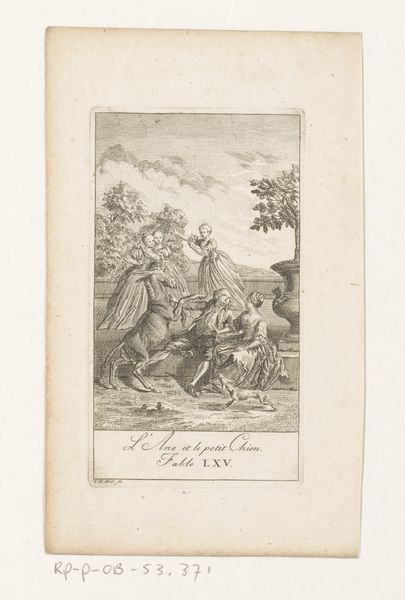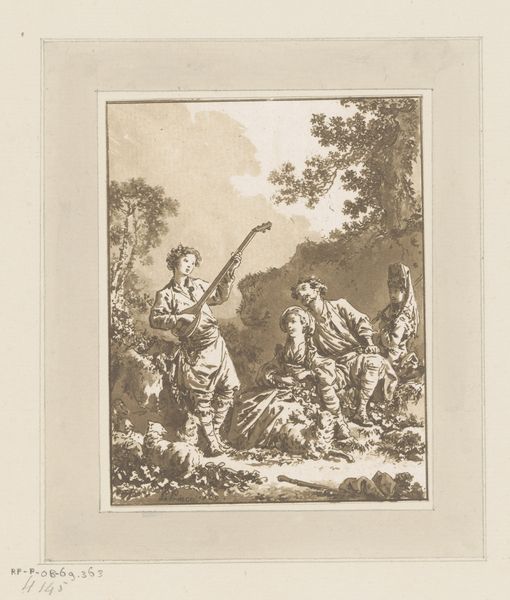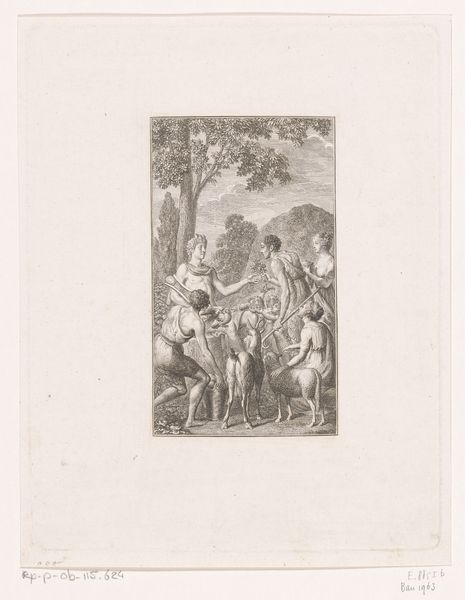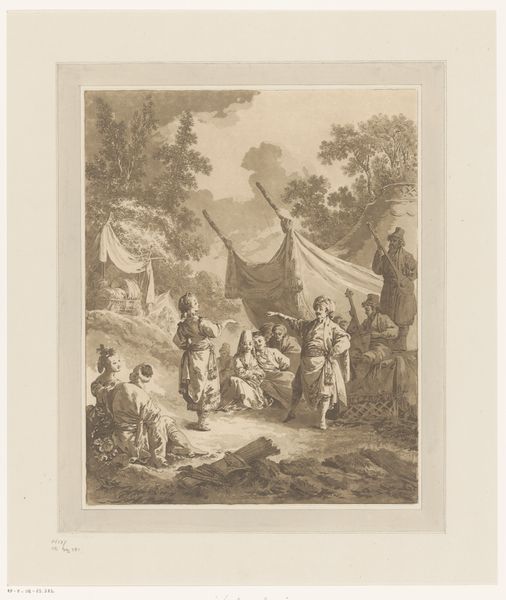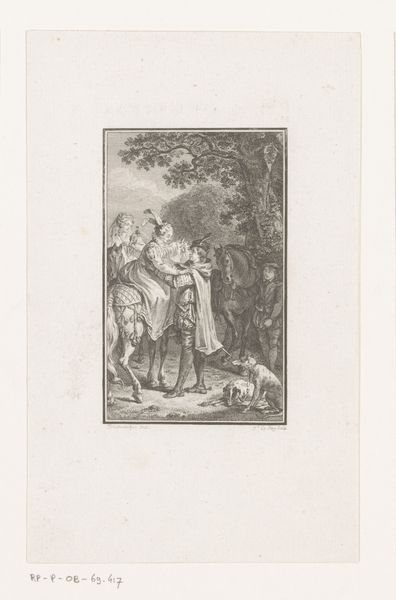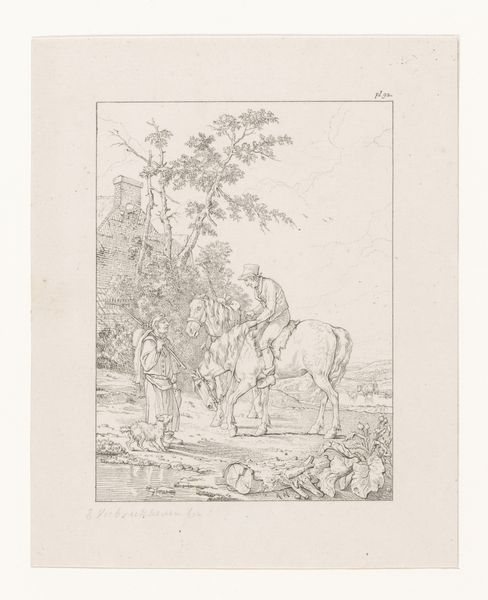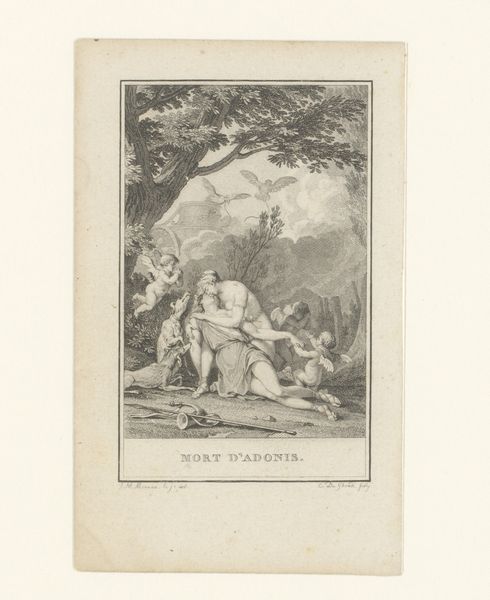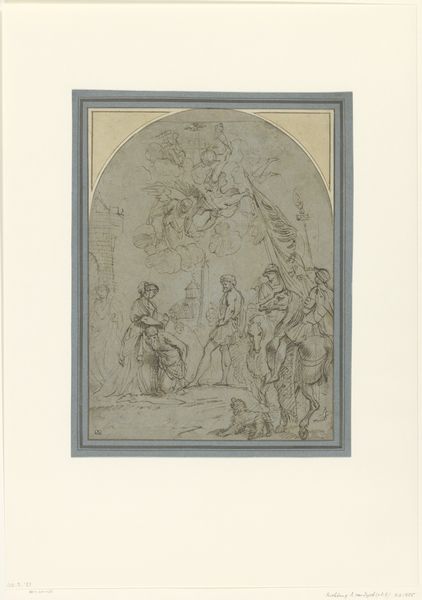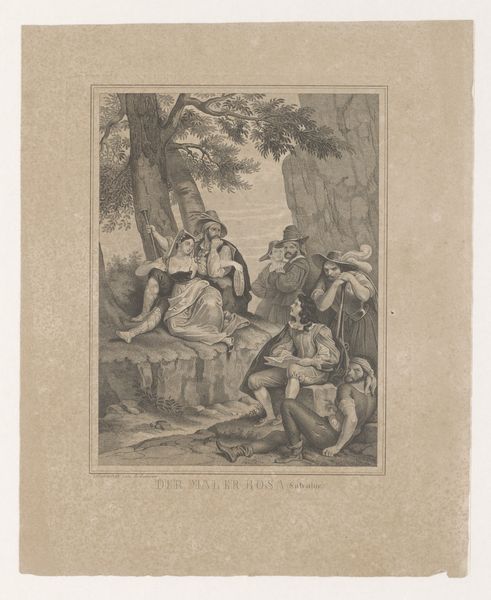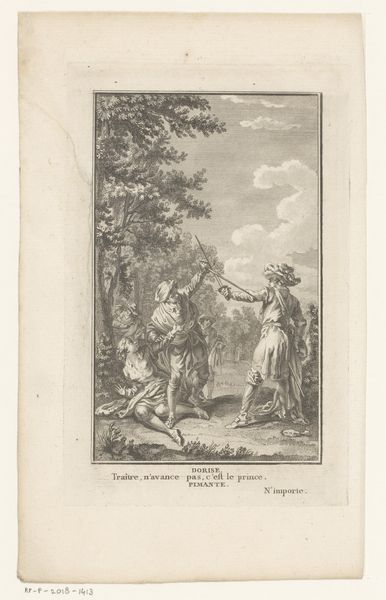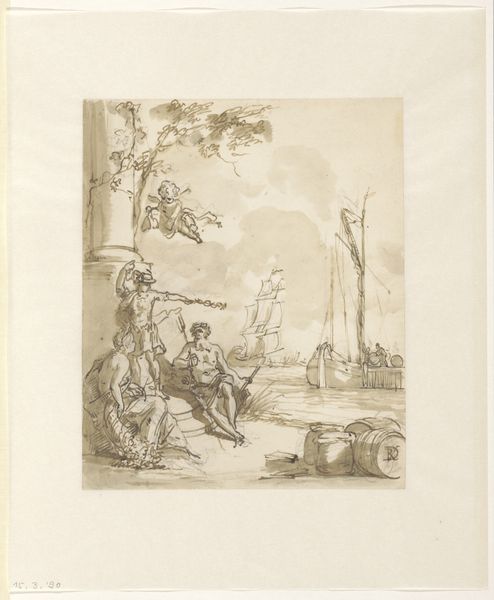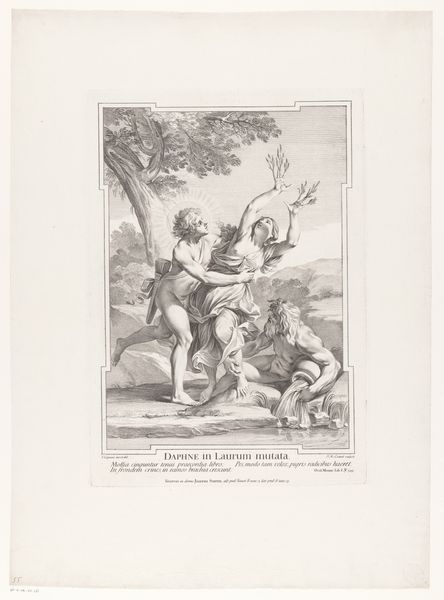
Jonge vrouw met twee mannen en een schalmeispeler in een tentenkamp 1770
0:00
0:00
drawing, ink
#
drawing
#
ink
#
genre-painting
#
rococo
Dimensions: height 127 mm, width 99 mm
Copyright: Rijks Museum: Open Domain
Curator: What a fascinating scene! We're looking at "Young Woman with Two Men and a Shawm Player in a Tent Camp," a work rendered in ink by Jean-Baptist Leprince around 1770, currently held in the Rijksmuseum collection. Editor: My immediate reaction is this feels performative, almost theatrical. The tent and figures have a constructed, rather than candid, quality. There’s an intentional staged air about it. Curator: Absolutely. It speaks to the Rococo interest in genre-painting. These idealized scenes often portrayed fantasies rather than realities, especially those evoking distant lands or cultures. Leprince and others often catered to a growing market that had interest in imagery from these far flung places. Editor: I see it in the headwear especially, which immediately makes me think of Turkish and vaguely "Orientalist" stereotypes circulating at that time. But the woman at the center seems almost to hold court; do you read this as some kind of social tableau? Curator: Quite possibly, or maybe even inspired by an exotic staged play that was popular during this period. Notice how Leprince plays with class dynamics, where musicians perform for what we are supposed to assume are well off noble figures, the artwork offers a glimpse into the cultural narratives popular at the time, reflecting how European society perceived and interacted with representations of "the Other". Editor: Yes, the shawm player's stance really draws the eye—but more than that, it’s the details. That conical hat could hold a different meaning in another artwork or removed from this painting entirely. I'm really intrigued by how symbols like headwear become culturally loaded. Curator: That is key; and looking at it from a social lens, these scenes became less about actual intercultural exchange and more about solidifying European identities by defining themselves in relation to these imagined "Others". The artwork serves less as a representation of accurate observation, but of constructing political messaging. Editor: It does make you wonder who was buying these images, what fantasies they fed, and what political ideas they inadvertently spread. This work, so delicate in its ink strokes, conceals many historical layers that might still linger even now. Curator: Indeed. The artistic skill of Leprince in portraying these individuals, set within the tent scene invites us to dissect it through the dual lens of social context and iconography.
Comments
No comments
Be the first to comment and join the conversation on the ultimate creative platform.
